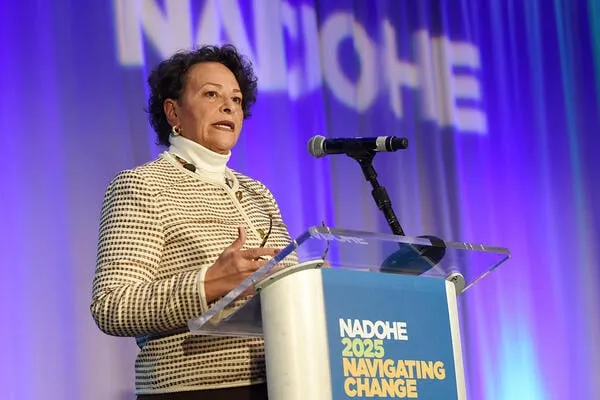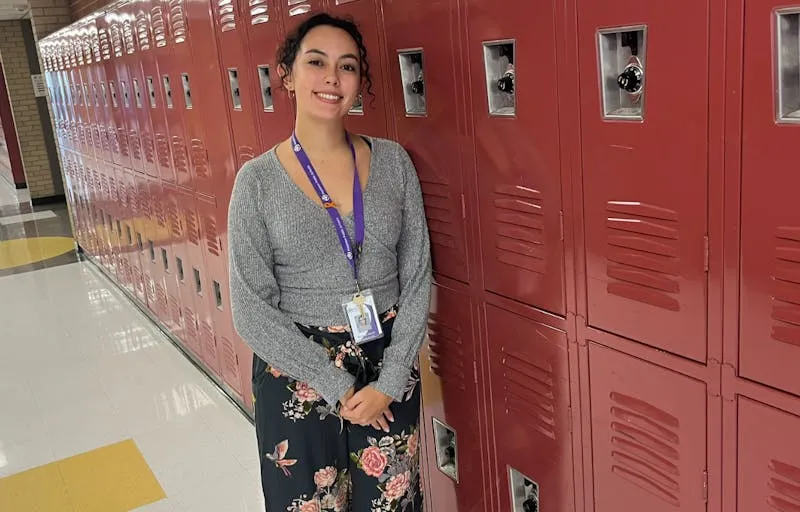This story was published by a Voices of Change fellow. Learn more about the fellowship here.
Dontrell* came to me early in my microschool journey. Bright. Hilarious. Expressive. Absolutely adorable, but also exhausting. He gave me the blues.
When he got upset, he’d bang his head against the wall. He spoke with a kind of honesty that caught people off guard, not because it was mean, but because it was raw and unfiltered. He didn’t say things to hurt anyone; he just didn’t understand why certain truths weren’t always welcomed and said out loud. To him, it all made sense, and that made it harder for others to understand him — and for him to understand them. His parents never mentioned any diagnosis, and I didn’t ask; at the time, I didn’t realize how much I didn’t understand.
Despite being a veteran teacher — or maybe because I was — I thought I had it figured out. I had taught students with ADHD, autism and other exceptionalities. I’d done the training and checked the boxes. Still, I didn’t know how much I was missing until someone gently pointed it out. It was a volunteer, someone who had worked closely with autistic youth, who observed Dontrell and said, “I think you’re missing something here.”
At first, I resisted. He didn’t seem autistic to me. But that’s the danger of a shallow understanding. Autism, and many other neurological and emotional differences, don’t have one face, one sound or one way of showing up in a classroom.
So I watched more closely. I started learning, not just reading but really studying him. I adjusted how I approached him, giving him more room to be himself while offering more structure where he needed it.
Over the next year, things slowly started to shift.
It took two years of respectful, patient and persistent conversations before his parent agreed to have him evaluated. The teacher I spoke with early on had been right: nothing was wrong with him, but it was confirmed that he has autism.
After his diagnosis, the third year with Dontrell was our best. His parents, after all the hesitations, were finally getting him the help he needed. Dontrell started to understand himself, and I finally had the tools to support him in the way he deserved.
When we talk about the failures of special education, the spotlight almost always shines on schools — on overcrowded classrooms, undertrained staff, underfunded programs and systemic ableism. But what’s often left unsaid is the quiet yet powerful impact of parental denial and nondisclosure on children with exceptionalities.
This is not to place blame, but to shed light, because the truth is, a child’s success depends on a strong partnership between the parent and the educator. When that partnership is rooted in openness and trust, we can make informed decisions that truly serve the child’s needs. Without it, even our best efforts can miss the mark.
The Silence That Protects – Until It Doesn’t
Parental silence around exceptionalities often shows up in two ways.
Sometimes, parents withhold a diagnosis out of fear of labels and lowered expectations. Other times, they haven’t fully accepted it themselves. Both forms of silence are deeply human and deeply costly.
If you’ve noticed differences in your child but hope they will “grow out of it,” that hope can delay needed help. A diagnosis brings grief and a heavier calendar filled with therapies, paperwork and extra meetings, but it can also bring clarity and resources.
Silence can also come from hard-earned mistrust. For many of us, special education once meant segregation and missed opportunities, and no parent wants their child to be underestimated because of their perceived abilities. Yet, that silence often stands in the way of the student’s growth. Teachers notice when something feels off — the tears during transitions and the overwhelm during group work. But without context, it becomes a guessing game, and most educators have limited formal training in diagnosing complex needs.
I’ll be honest, it wasn’t until I was writing and researching for this essay that I recalled a professor mentioning that a child with ADHD might hum softly to self-regulate. Do you know how many times I’ve told a student to hush? I didn’t connect the dots. That’s how easy signs are to miss, even for veteran teachers. But it’s never too late to change course, and parent and family engagement can change that.
What Partnership Makes Possible
For families ready to move forward with love and intention, here are five steps I’ve learned in my journey as an educator who works with students with exceptionalities that can help you turn silence into strategy:
- Acknowledge your emotions, but don’t stop there. Grief, fear and uncertainty are real, but they can’t lead your decisions. Name the feelings, then seek clarity, not comfort.
- Don’t do this alone; get support. Lean on a trusted pediatrician, school counselor or parent advocacy group. Community turns isolation into empowerment.
- Be transparent and proactive. Whether you have a diagnosis or just concerns, schedule a brief meeting early in the school year. Open with a strength, share observations and set a next step together.
- Share what truly supports your child, even if it doesn’t seem academic. Calming strategies, triggers, routines, social or sensory needs shape daily learning as much as grades.
- Keep the conversation going. Advocacy is continuous. Follow up, celebrate small wins and adjust strategies together. Partnership grows over time, not just at IEP meetings.
With Dontrell, we lost almost two years of proper instructional support as we attempted to guess and adjust without a full picture. Those are two years when Dontrell could have had the right tools and a stronger self-understanding.
When his mother and I finally sat down, I said, “He’s not struggling because of his ability; he’s struggling because we haven’t given him what he needs.” That conversation changed everything.
With diagnosis came direction. With services came strategy. With partnership came progress.
Dontrell’s reading comprehension now exceeds expectations by more than four grade levels. He is confident, connected and moving forward with a team that understands how to support him.
That is the power of shared truth and early partnership. When parents and educators move from silence to collaboration, children don’t just cope, they thrive.


